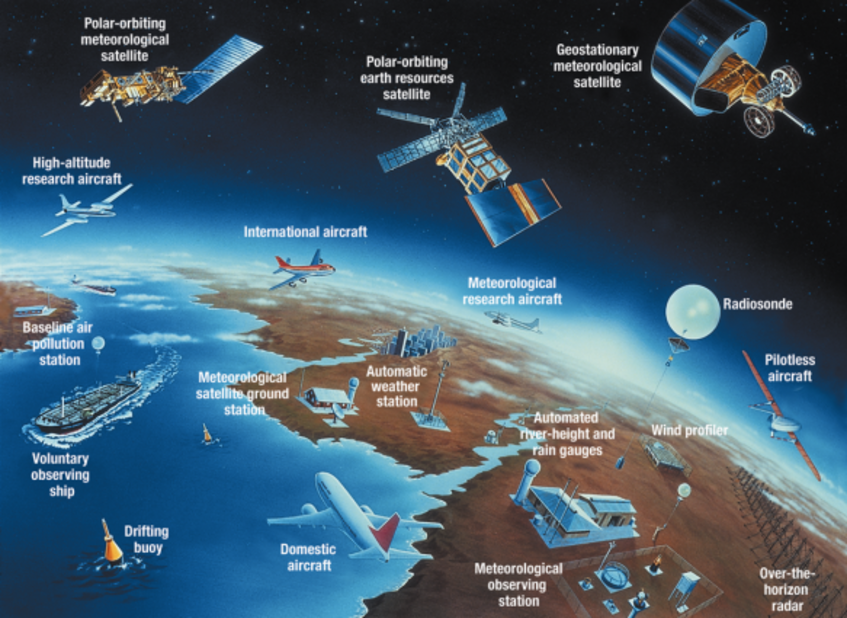Observation impact and observing strategies for NWP
The quality of numerical weather prediction (NWP) forecasts strongly depends on the accuracy of initial conditions. Data assimilation systems provide the best estimate of the initial state, which combines the latest short-range forecast with millions of observations. However, little knowledge exists on the impact of various observations within NWP. A better understanding of observation impact could be used to improve future data assimilation, forecasting, and observing systems.
Observation Impact
The goal of our research is to improve and apply ensemble-based methods for estimating observation impact. In particular, we focus on the impact of observations in convective-scale NWP. To estimate the impact of observations we apply large ensemble simulations (up to 1000 members) from which we derive spatio-temporal correlations and forecast sensitivities.
Observing Strategies
A better understanding of observation impact is crucial when designing future observing networks. Already today more observations are available than can be assimilated. Furthermore, new measurement techniques and cheaper instruments are available and could easily be installed. Our goal is to estimate the potential impact of different observation types to derive future observing strategies. Observation impacts are estimated using ensemble-based methods (e.g. estimation of variance reduction). Another project in collaboration with the Hans-Ertel-Zentrum (HErZ), University Cologne/Bonn aims to estimate the impact of observations on the forecast of power production (renewable energy).
Recent publications
Nomokonova, T., Griewank, P.J., Löhnert, U., Miyoshi, T., Necker, T. & Weissmann, M.(2022) Estimating the benefit of Doppler wind lidars for short-term low-level wind ensemble forecasts. Quarterly Journal of the Royal Meteorological Society, 1– 19. Available from: https://doi.org/10.1002/qj.4402
Griewank, P.J., Weissmann, M., Necker, T., Nomokonova, T., Löhnert, U. (2023) Ensemble-based estimates of the impact of potential observations. Quarterly Journal of the Royal Meteorological Society, 149(754), 1546–1571. Available from: https://doi.org/10.1002/qj.4464

© WMO- Global Observing System
